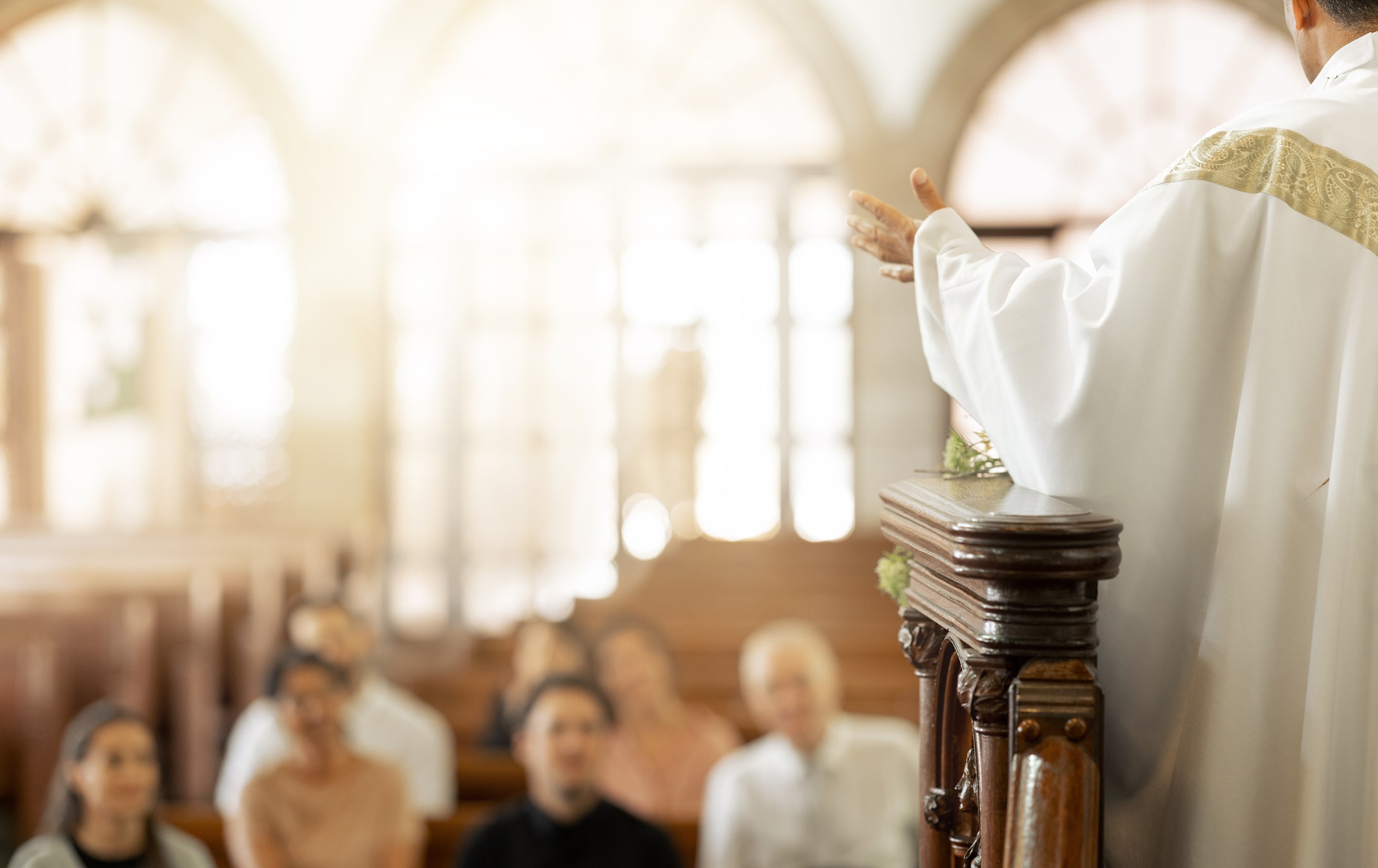 Recently, I got to sit down with Scott Dixon, a church website design expert who’s worked exclusively with thousands of churches and their websites since 2005. I wanted to learn more about why church websites are so important and how churches can improve them to reach both members and prospects.
Recently, I got to sit down with Scott Dixon, a church website design expert who’s worked exclusively with thousands of churches and their websites since 2005. I wanted to learn more about why church websites are so important and how churches can improve them to reach both members and prospects.
Hi Scott, you’ve worked with a lot of churches to help them update and improve their websites and I know you believe that websites are an important part of a church’s ministry. Why is a church website so important?
Statistically, most visitors visiting a church for the first time have looked at the church website before they go for a visit. It’s important to understand that your church website is the first impression. Whether we want to acknowledge it, your website says so much about your ministry, your members, and the whole experience. Besides that first impression, content, and ease of use are critical to having an effective and a valuable outreach tool for your ministry.
Why is this so important? When we add social media to the mix, the game changes so much. While social media is fantastic, there are so many trending social media platforms, it’s hard to keep up with them all. To give people the whole picture of who you are and what you have going on, in many cases a post or tweet can be inauthentic for a first time visitor. Eventually, most all media outlets lead back to the website. I believe that having a website is the one place a curious person can see what a church is all about. Not only should a church have a website, but it should also be an extension of their ministry. Like I mentioned earlier, planned or not, the website is much like the front door of your church. Reality is, the church website is an expression of the church; untimely, it’s a reflection of what someone can expect when they arrive.
I think most church staff do realize their church needs an up-to-date website, but many don’t have a dedicated webmaster and other projects and work situations get in the way of keeping it up. Do you have any tips to help churches make sure their website stays up-to-date?
One of the biggest impacts in maintaining a website seems to be the lack of planning or making updates a priority. In many cases, these problems start in leadership.
Making your website easy to update is essential to maintaining your website. I encourage clients to have one centralized page for time sensitive news, events, and announcements vs. having multiple pages to update.
Another tip for our ACS Technologies Extend Platform® clients is to set an expiration date on the article. This feature will automatically remove the outdated information from the website. Extend clients can also sign-up for our Webmastering Service, a service where our team will make updates and changes for you.
What are some of the main problems you find church websites have?
I’ve seen a little bit of it all Carol, from outdated websites, to site’s that have far too little or way too much content, or websites having overly complicated menus. If I had to pick something over just keeping the website simple, another problem is that clients face way too often, would be relying on a volunteer to build, update and maintain their website.
Now, don’t get me wrong, volunteers are wonderful. And, I too understand the limits of having enough time. Volunteers can do a great job at helping ease the burden on staff. I know quite a few churches that rely on volunteers to update or even build their websites. The problem with this is there are rarely checks and balances in place to handle unfortunate surprises. For example, when a volunteer leaves, changes jobs, or has a baby, is there a plan when the volunteer isn’t able to update the website any longer? Any change in routine can cost you. The simplest changes or updates seem to be impossible for the church at that point. When recruiting volunteers, make sure to ask for passwords, give training, have a back up plan.
You’ve worked with lots of churches to help them improve their websites. Is there something you find that many haven’t thought about including that is really important?
Well, this varies from church to church. One way to improve a website (new or old) is to step back and look at the website from a different point of view. Get feedback from members or from your friends that don’t know much about your church. Getting other peoples’ perspective can help pinpoint things that are missing. Feedback can help define your focus; it can help you understand what is work or isn’t working. Hold a review and look for outdated content, not just on the home page but in all areas of the website. Simply having a conversation with people about your website can lead to feedback that could actually surprise you. A few simple changes can be a huge improvement to your website.
Churches need to be forward looking, and that applies to their websites. When a church is doing long-term strategic planning, what should they think about regarding their website?
Planning is the most important part of any area of ministry, and this includes the website.
– Is there a back up plan for when someone leaves?
– Is there a primary contact person who makes sure updates are being made and the site is being maintained and updated routinely?
– What is trending now?
– When should the website and pages be reviewed – to ensure that the content is update to date and more importantly relevant to today’s audience?
Your website should be a living and ever evolving part of your ministry.
What’s a future trend you see for church websites?
I see more mobile optimized websites, with streamlined and simple/minimalistic designs, quick to the point content, more images and videos. It’s here, it’s coming, it’s already our culture. Things are evolving quickly in the web world. The user experience is becoming more and more important, sentences are getting shorter. Content is brief and to the point. Websites are carefully becoming shorter and simpler. Originality is on the rise, we will see less use of stock photography and more real images and videos. As these trends continue to move forward, embrace them.
After reading some of your comments some churches may decide to tweak or revamp their website. And some may decide to use a web designer to help them rather than trying to do the work themselves. What should a church look for in a designer, and once they find that person, what should they ask, do, and NOT do?
Carol – Let’s start with getting to know your designer or potential designer. First, it’s important to know what level of experience your designer has and what they are able to provide. That person may give you a handsome new design, but if that new design doesn’t work or is complicated to use, it’s not very useful. A new design can quickly unravel if the needs of your stakeholders, congregants and guests, can’t find what they need, or if the website is frustrating to use. A clunker with a new paint job is still a clunker.
Not knowing the designer can lead to greater problems down the road. Knowing what to ask the designer can help you understand the process and build a good working relationship. It’s okay to ask questions; ask for references or a portfolio of previous work. Always make sure to have access to files and artwork that you can use with other communications and applications. It’s important that the site is user friendly and easy to maintain going forward. Know what options or terms are available. When will tweaks, modifications or enhancements be needed after the site goes live? A good design will look good, but it also should be flexible enough to grow as needs change and the ministry grows. There are a lot of questions to ask before beginning this new journey. (Yes, I say journey because a redesign or a new design isn’t something that happens overnight.)
Secondly, clients who are open to recommendations and advice from the designer, end up with a better experience. Clients should establish expectations up front. Be explicit in saying what you want and don’t want. Allow the designer to do their best and work with them in a collaborative environment. The outcome isn’t just a handsome website, but an effective, easy to use site, that exceeds all expectations!
Lastly, so many design projects never reach their full potential mainly because they get mired down in committee decision making or “perpetual planning”. It’s impossible to please everyone, and when every decision is made by committee, it’s going to be a long and bumpy ride. When I realize I’m working with a committee, I encourage them to appoint one person to manage the project going forward. This one person is the primary contact and intermediary between me and the team.




